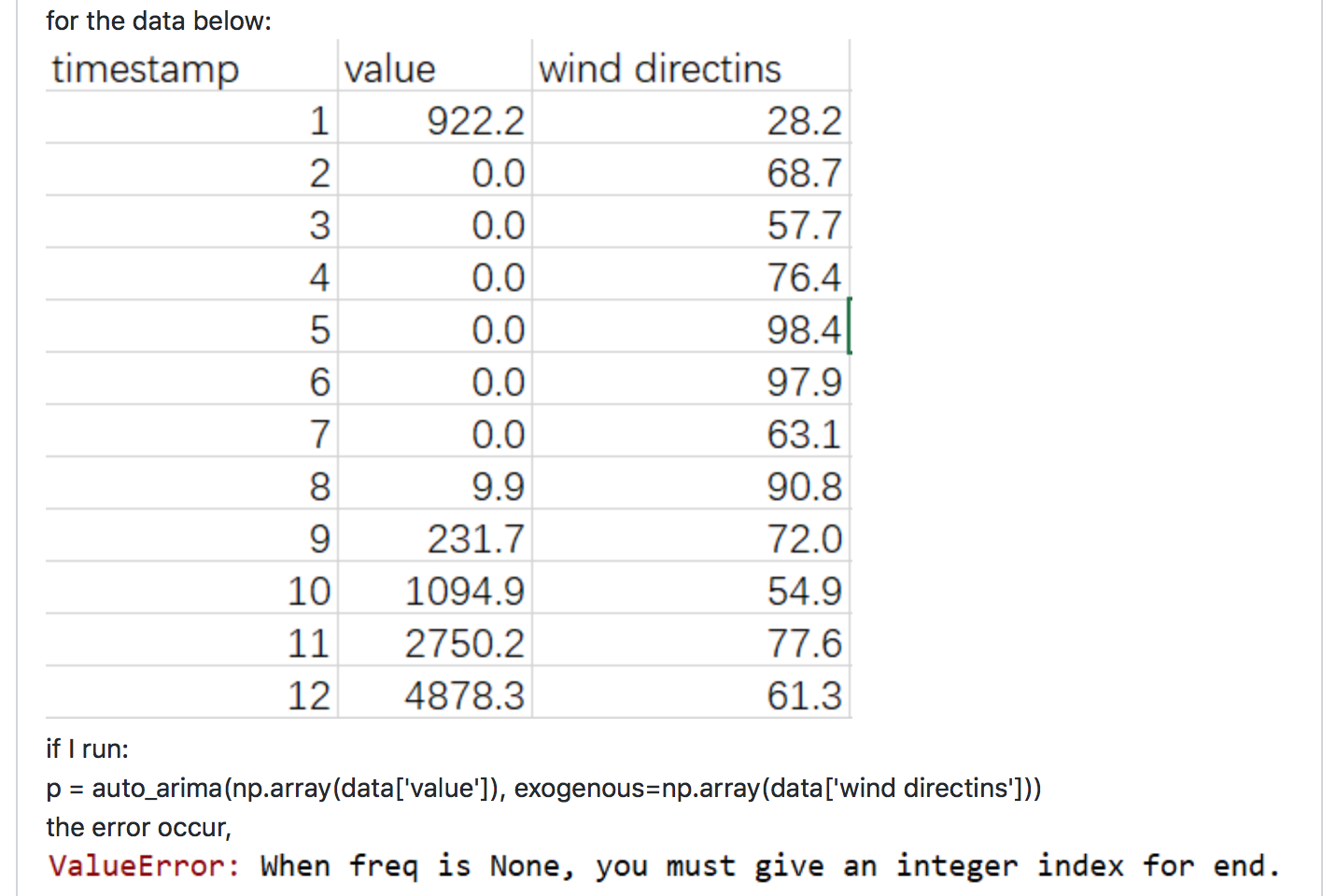8. Contributing to pmdarima¶
Note: This document is a ‘getting started’ summary for contributing code, documentation, testing, and filing issues. Please read it carefully to help make the code review process go as smoothly as possible and maximize the likelihood of your contribution being merged.
8.1. How to contribute¶
The preferred workflow for contributing to pmdarima is to fork the main repository on Github, clone, and develop on a branch. Steps:
Fork the project repository by clicking on the ‘Fork’ button near the top right of the page. This creates a copy of the code under your Github user account.
Clone your fork of the pmdarima repo from your Github account to your local disk:
$ git clone https://github.com/tgsmith61591/pmdarima.git $ cd pmdarimaCreate a
featurebranch to hold your development changes:$ git checkout -b my-feature
Always use a
featurebranch. It’s good practice to never work on themasterbranch!Develop the feature on your feature branch. Add changed files using
git addand thengit commitfiles:$ git add modified_files $ git commit
to record your changes in Git, then push the changes to your Github account with:
$ git push -u origin my-feature
5. Follow these instructions to create a pull request from your fork. This will send an email to the committers.
8.2. Pull Request Checklist¶
We recommended (and prefer that) that your contribution complies with the following rules before you submit a pull request. Failure to adhere to the rules may hinder the speed with which your contribution is merged:
pmdarimauses the gitflow branching model. That means all of your feature branches should be merged back to the develop branch, and not master!Write detailed docstrings for all of your public functions. The preferred format for docstrings is the numpy standard. Also include usage examples where appropriate. See also the Numpy guidelines for documenting your code
Use, when applicable, the validation tools and scripts in the
pmdarima.utilssubmodule.Give your merge request a helpful title that summarizes what your contribution does. In some cases
Fix <ISSUE TITLE>is enough.Fix #<ISSUE NUMBER>is not enough.If your pull request references an issue, reference it in the body of your descriptive text using
#<ISSUE NUMBER>Please prefix the title of your pull request with
[MRG](Ready for Merge), if the contribution is complete and ready for a detailed review. The core developers will then review your code and merge when approved. An incomplete contribution – where you expect to do more work before receiving a full review – should be prefixed[WIP](to indicate a work in progress) and changed to[MRG]when it matures. WIPs may be useful to: indicate you are working on something to avoid duplicated work, request broad review of functionality or API, or seek collaborators.All other tests pass when everything is rebuilt from scratch. Note that this will actually require a Spark distribution to work locally. On Unix-like systems, check with (from the toplevel source folder):
$ python setup.py develop $ pytest
You can also use the
Makefileon posix machines:$ make testYou may need to see the Setup section for instructions on how to build the package. For instructions on how to test (using nose or pytest) see Numpy’s testing instructions.
8.3. Filing bugs¶
We use Github issues to track all bugs and feature requests; feel free to open an issue if you have found a bug or wish to see a feature implemented.
It is recommended to check that your issue complies with the following rules before submitting:
- Verify that your issue is not being currently addressed by other issues or pull requests.
- If your issue references and pull request, reference it in the body of your
descriptive text using
!<PULL REQUEST NUMBER> - Please include your operating system type and version number, as well as your Python, scikit-learn, numpy, scipy, pandas and pmdarima versions. This information can be found by running the following code snippet:
import platform; print(platform.platform()) import sys; print("Python", sys.version) import numpy; print("NumPy", numpy.__version__) import scipy; print("SciPy", scipy.__version__) import sklearn; print("Scikit-Learn", sklearn.__version__) import pandas; print("Pandas", pandas.__version__) import statsmodels; print("Statsmodels", statsmodels.__version__) import pmdarima; print("pmdarima", pmdarima.__version__)
- Please don’t be a lazy issue-filer! Submitting a screen shot of an Excel document, or poorly-formatted/incomplete code makes the maintainers’ lives difficult. Please include your data inline in a code-block so maintainers can easily try to replicate. What not to do:

A better way to file the same issue (made up; this issue was not actually filed):
